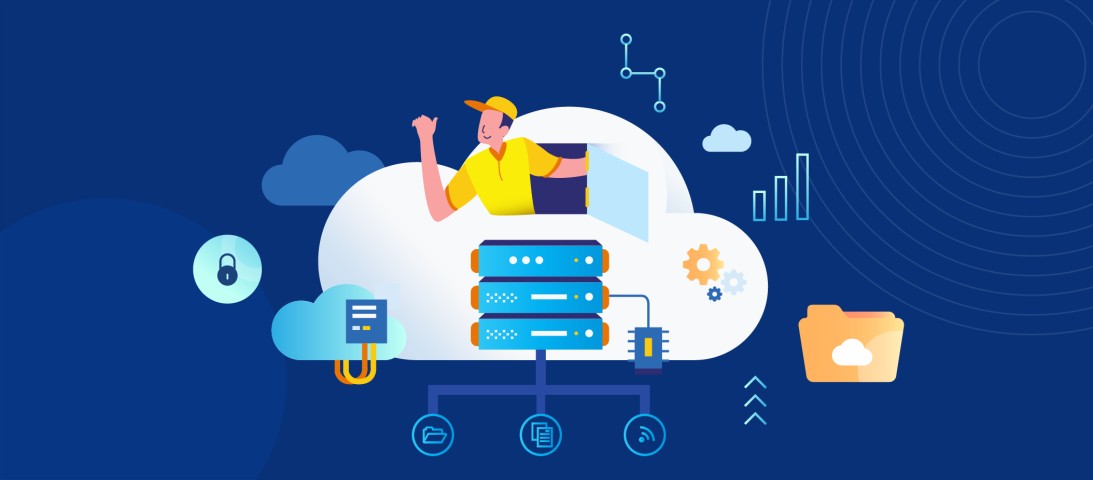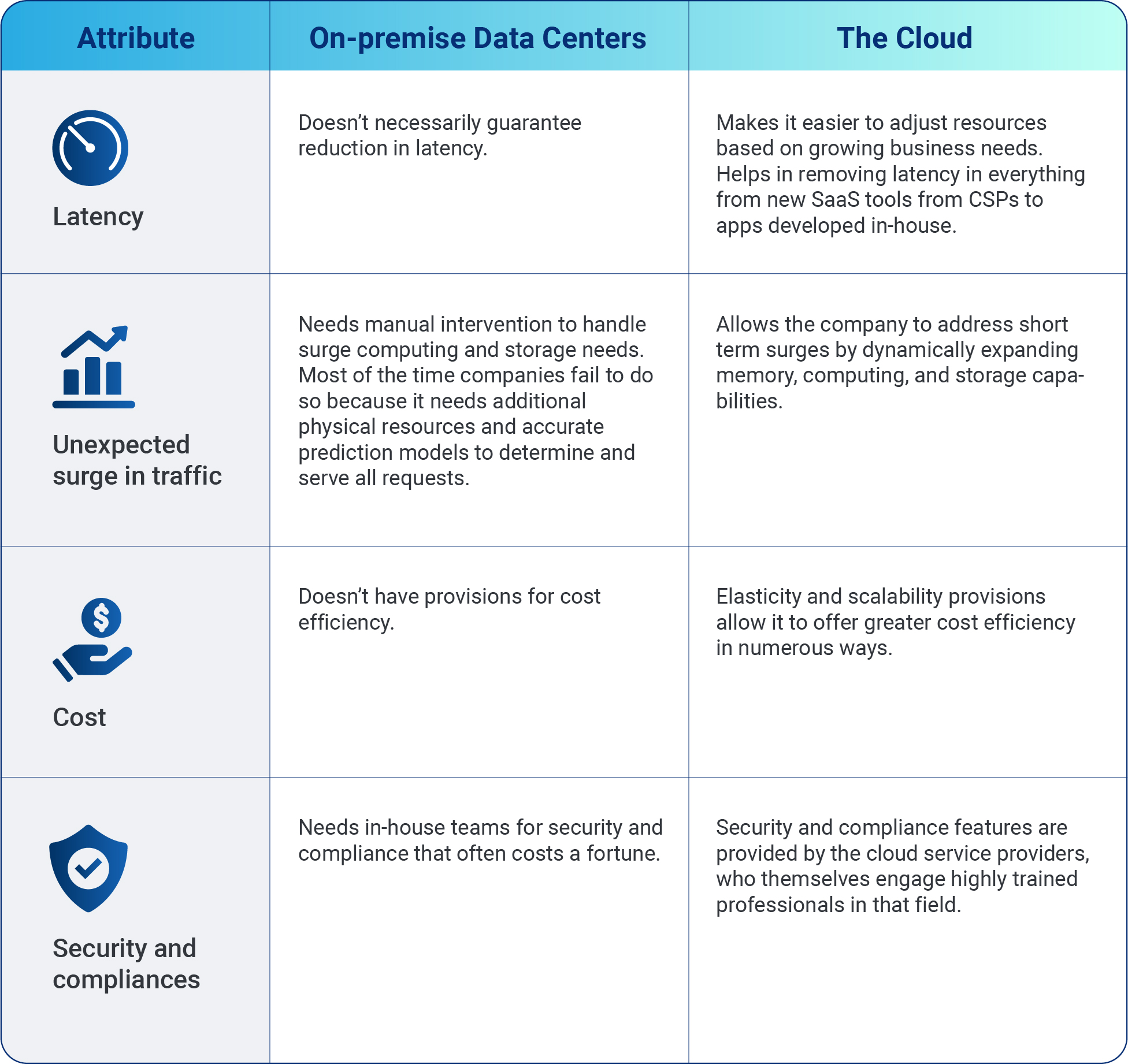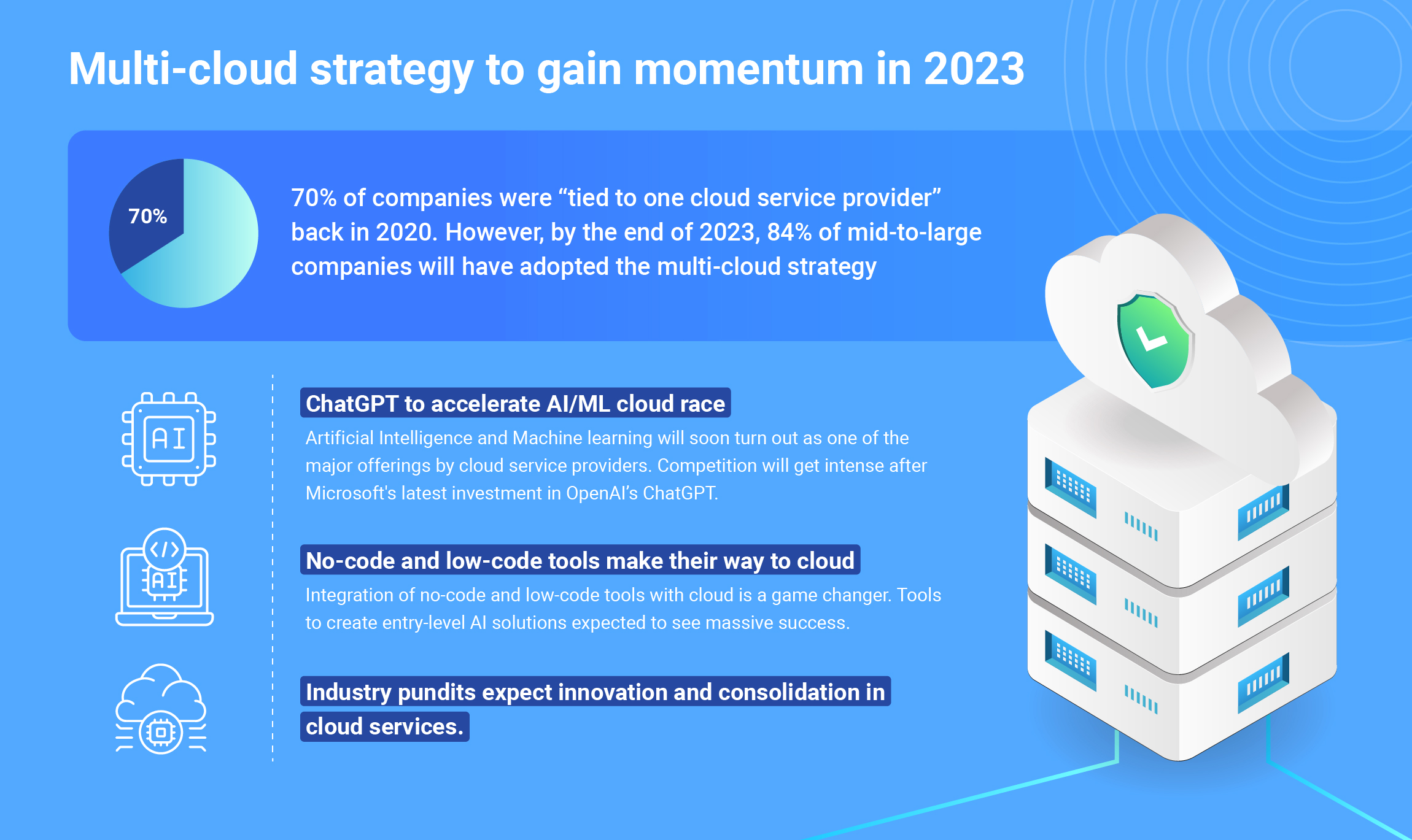The author is a CEO and Co-Founder in Eucloid. For any queries, reach out to us at: contact@eucloid.com
Understanding Data Migration: On-Premise vs Cloud

In an extensive survey by Zippia, a leading career portal in the US, reports suggest that a whopping 94% of enterprises use cloud services. Upon further discussion, the respondents shared that 92% of them were keen to have a multi-cloud strategy in place in the near future. While having most of the IT infrastructure on the cloud, and in most cases, with multiple vendors (referred as multi-cloud strategy), sounds like a great opportunity for cloud engineers, it most importantly, highlights the massive market shift from on-premise data storage / computing solutions to flexible cloud-based offerings.
In this article, we break down data migration philosophies for the cloud, from a business perspective, and explain how you could benefit from it too.
Understanding On-Premise and Cloud Storage Solutions
The concepts of on-premise and cloud-based storage solutions are not overly complex. In an on-premise setup, a company acquires resources and carries out all the operations through its in-house data centers whether located in the company premises or remotely. This includes buying and maintaining servers, having engineers to carry out operations day in and out, and manually upgrading the aging hardware to newer generations over the years. While, on the other hand, a cloud-based offering leverages external resources and allows companies to pay a premium based on usage (similar to paying rent for the storage and computing solutions). The key advantages of such an approach are:
-
Paying only for what is required.
-
Scaling data storage and computing capabilities depending on business needs.
-
Eliminating the hassles of maintaining and upgrading software and devices.

Why and When Do We Need Data Migration?
Ever imagined your email services being down for a minute; or worse, an hour? Having an online business, irrespective of size or scale, leaves companies with no option but being available round the clock. Cloud service providers ensure these functionalities seamlessly through a mixed bag of techniques and an extensive physical infrastructure stretching across geographies, making migrating to the cloud a no-brainer for digital businesses.
On the other hand, even if you are an offline business (say, a spa or a resort), your website being down could affect your brand reputation significantly. The losses could be in the millions! The cloud offers businesses reduced cost, scalability, improved efficiency, and hence cannot be ignored. However, if you are still looking out for reasons to migrate to the cloud, consider these points:
-
Scalability: As businesses grow, the need for better computation capabilities and storage solutions grow too. Are you well-equipped for the surge traffic or users signing in and out of your application across geographies?
- Reliability: The cloud offers better redundancy control and a bigger selection of data centers to keep critical systems running even if there is an outage. Is spending a fortune on the construction and maintenance of secondary or tertiary data centers still a feasible option?
- Business Agility and Cost Savings: Moving to cloud means more online conversations and collaborations where resources are created or uploaded and shared over platforms. This ensures a more agile environment - a state commonly seen in a distributed team. Additionally, since companies are saved from the hassles of creating secondary or tertiary data centers to ensure reliability, a massive fortune is saved in the process.
On-Premise Vs Cloud Based Storage Solutions
It is evident that the companies are migrating from in-house data centers to the cloud for various reasons. This could be for the virtually endless storage and computing powers or just to ensure reliability. Here are the key differences.

Cloud Migration Strategies
When it comes to cloud migration strategies, there are 6 major concepts. Back in 2010, Gartner released ‘The 6 Rs of Migration’. The following cloud strategies have been adapted from the above report. They are:
-
Rehosting (or, Lift and Shift): According to this concept, the entire application is just transferred to the new hosting environment without making any changes in its code or architecture.
-
Re-platforming: Re-platforming involves making minor changes in the application’s code to optimize it for the cloud. It also ensures the changes are achieved without making any difference in the software’s core architecture.
-
Re-factoring: In re-factoring an application is completely rewritten for the application to make use of the cloud-native features such as serverless computing and auto-scaling.
-
Re-purchasing: Re-purchasing involves replacing the current apps with a cloud-native architecture. This translates to loss in terms of familiarity with the current code and educating your developers about the new platform.
-
Retiring: Retiring essentially means eliminating certain parts of an application or the entire application. This could be because the application that may have a better version or simply has become redundant.
-
Re-visiting: Some of the applications are meant to be used internally or contain sensitive data that could not be released. These applications are categorized under the re-visiting section of the cloud migration category.
Top Data Migration Tools
Data migration tools (both for offline and online migration) can be categorized into three major forms. These are as following:
- On-premise tools: Tools essential to migrate data within the network of a large or medium enterprise installation. Some of the major tools in this space are Centerprise Data Integrator, CloverDX, IBM InfoSphere, Informatica PowerCenter, Microsoft SQL, Oracle Data Service Integrator, Talend Data Integration.
- Open Source tools: Community driven and developed data migration tools that can be sourced free of cost or at a very low cost. Some of the major tools under this category are Apache NiFi, Myddleware, Pentaho, Talend Open Studio.
- Cloud-based tools: Cloud based tools enable developers to move data across multiple clouds or source data from various sources and streams like applications, services, and on-premise and cloud-based data stores. Some of the tools that fall under this category are Alooma, Fivetran, Matillion, Snaplogic, and Stitch Data.
Recent Trends and Market Movements

Success Stories
Airbnb has been a major success, not just in terms of scale and growth, but also in terms of tech stack. The company is known for its geographic presence across 100,000+ cities across the globe. It rolled out its operations in 2008 where it operated through traditional, in-house servers. But it soon realized that it has to outsource its computation and storage needs and focus on building the business. The company then quickly migrated to Amazon Web Services (AWS), allowing it to invest less than 5 persons in the operations team and having only 15 minutes of downtime over a year.
On a similar note, Auto Trader, a leading UK based print magazine-turned-digital automotive marketplace, transitioned its infrastructure to the cloud in 2018. The company initially had an on-premise infrastructure with an Oracle database. It then adopted Google Cloud and, as per a report in 2021, the company moved more than 65% of its database to the cloud. The move enabled to reduce downtime substantially and allowed the developers to focus on creating a better experience rather than worrying about data security and server maintenance.
No wonder cloud vs. on-premise setups aren’t debated anymore. The cloud provides much required flexibility and scalability at a fraction of the cost. However, most companies do realize that relying completely on a single cloud vendor could be risky and therefore the demand for cloud migration professionals is at an all time high. Make sure you hire the right team who can help you navigate the complexities of the cloud!
Evaluating Data Migration activities for your business? Talk to us. We can help. Reach out at contact@eucloid.com
Posted on : March 27, 2023
Category : Data Engineering
About the Authors
